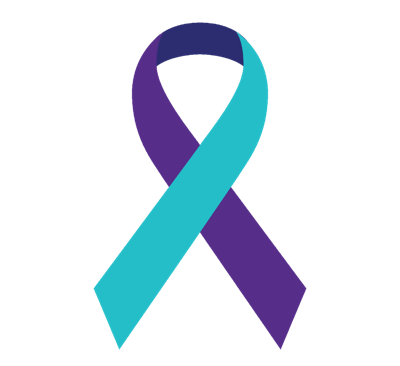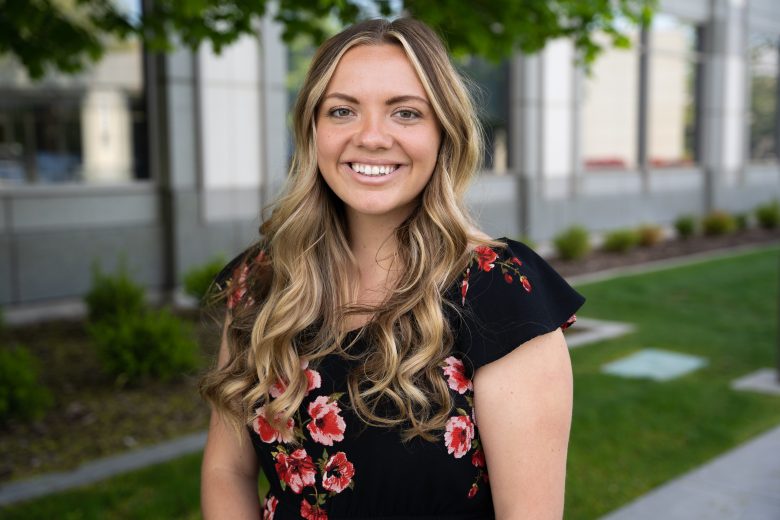By Dr. Kristal James and Dr. Kristin Erskine

Let’s talk suicide. No really….let’s talk about it. Many people believe that talking about suicide can increase suicide attempts. However, the Nevada Health Response team suggests the opposite is true (2021). Talking about suicide, promoting connectedness, supporting anti-bullying measures, encouraging mental wellness, reducing stigma, and preventing substance misuse have all been shown to be effective prevention techniques to combat suicide (Hope Squad, 2021). September is National Suicide Prevention Month (2021) which is intended to “promote suicide prevention awareness,” so, let’s talk about it!
Many people are afraid to make a mistake about how and what they say. Terms such as “committed” or “completed” suicide have been suggested to be counterproductive with negative connotations (Olson, n.d.; Spencer-Thomas, 2021). This can increase the uncertainty and fear for many people when contemplating conversations about this sensitive topic. We want to get the conversation right and may find ourselves paralyzed by our efforts to get it right. Perhaps people have felt it is better to say nothing than to say the wrong thing. Well, let’s make it simple. Suicide. Simple and straightforward conversations and language (i.e. suicide) is the first step in suicide prevention and awareness.
Suicide Statistics
Suicide was the tenth leading cause of death overall in the United States in 2019 for all races and genders and is the fourth leading cause of death for ages 15-19 (CDC, 2019; NIMH, 2021; WHO, 2021). Suicide is highest among middle-aged white men and accounted for nearly 70% of suicides in 2019 (American Foundation for Suicide Prevention, 2021). Although mental health disorders can exacerbate suicidal ideation, suicide is not limited to those who have been diagnosed with mental illness. With statistics like this, it can be easy to get overwhelmed. So, let’s break it down.
Suicide Prevention
Suicide prevention can look like a lot of things. For children and youth, it can look like preventing trauma and adverse childhood experiences, promoting positive parenting skills, building positive family relationships, strengthening coping skills, and advocating for policies and laws that reduce binge drinking and access to lethal means (Curtin, 2020). For everyone, it is recommended that limiting access to the means of suicide, becoming aware of various support lines and other media to help prevent suicide, and engage in early identification and follow-up efforts to help prevent suicide (WHO, 2021).
What can a person do to help someone who is suicidal? As seen in the infographic, there several ways, referred to as Protective Factors, that can reduce the risk of suicide:
Suicide Risks and Behaviors
There are people who may be a higher risk for suicide, however, no one should be ruled out. If you notice any of the warning signs, take those signs seriously:
- Talking about wanting to die or to kill themselves
- Looking for a way to kill themselves, like searching online or buying a gun
- Talking about feeling hopeless or having no reason to live
- Talking about feeling trapped or in unbearable pain
- Talking about being a burden to others
- Increasing the use of alcohol or drugs
- Acting anxious or agitated; behaving recklessly
- Sleeping too little or too much
- Withdrawing or isolating themselves
- Showing rage or talking about seeking revenge
- Extreme mood swings (SAMHSA, n.d.)
If you believe someone is at risk of suicide:
- Ask them if they are thinking about killing themselves. (This will not put the idea into their heads, or make it more likely that they will attempt suicide.);
- Call the U.S. National Suicide Prevention Lifeline at 800-273-TALK (8255);
- Take the person to an emergency room or seek help from a medical or mental health professional;
- Remove any objects that could be used in a suicide attempt; and
- If possible, do not leave the person alone (U.S. Department of Health & Human Services, 2012).
Resources
American Foundation for Suicide Prevention. 2021. Suicide statistics. https://afsp.org/suicide-statistics/
CDC. (2019). Leading cause of death, US. https://webappa.cdc.gov/cgi-bin/broker.exe
Curtin, S. C. (2020). State suicide rates among adolescents and young adults aged 10-24: United States, 2000-2018. National Center for Health Statistics, Centers for Disease Control and Prevention. https://www.cdc.gov/nchs/data/nvsr/nvsr69/nvsr-69-11-508.pdf.Hope Squad (2021). Hope Squad Members Strive To. https://hopesquad.com/
National Suicide Prevention Month (2021). Promote National Suicide Prevention Month. https://suicidepreventionlifeline.org/promote-national-suicide-prevention-month/
Nevada Health Response Team (2021) Suicide Prevention. https://suicideprevention.nv.gov/Youth/Myths/
NIMH. (2021). Suicide. https://www.nimh.nih.gov/health/statistics/suicide
Olson, R. (n.d.) Suicide Language. Centre for Suicide Prevention. https://www.suicideinfo.ca/resource/suicideandlanguage/
SAMHSA. (n.d.) We can all prevent suicide. https://suicidepreventionlifeline.org/how-we-can-all-prevent-suicide/
SAMHSA. (2020). Treatment for suicidal ideation, self-harm, and suicide attempts among youths. SAMHSA Evidence-Based Resource Guide Series. https://store.samhsa.gov/product/Treatment-for-Suicidal-Ideation-Self-harm-and-Suicide-Attempts-Among-Youth/PEP20-06-01-002
Spencer-Thomas, S. (2021). Language Matters: Why we don’t say committed suicide. International Risk Management Institute. https://www.suicideinfo.ca/resource/suicideandlanguage/
U.S. Department of Health & Human Services. (2012). How you can play a role in preventing suicide. https://www.hhs.gov/sites/default/files/national-strategy-for-suicide-prevention-factsheet.pdf
WHO. (2021). Suicide. https://www.who.int/news-room/fact-sheets/detail/suicide



